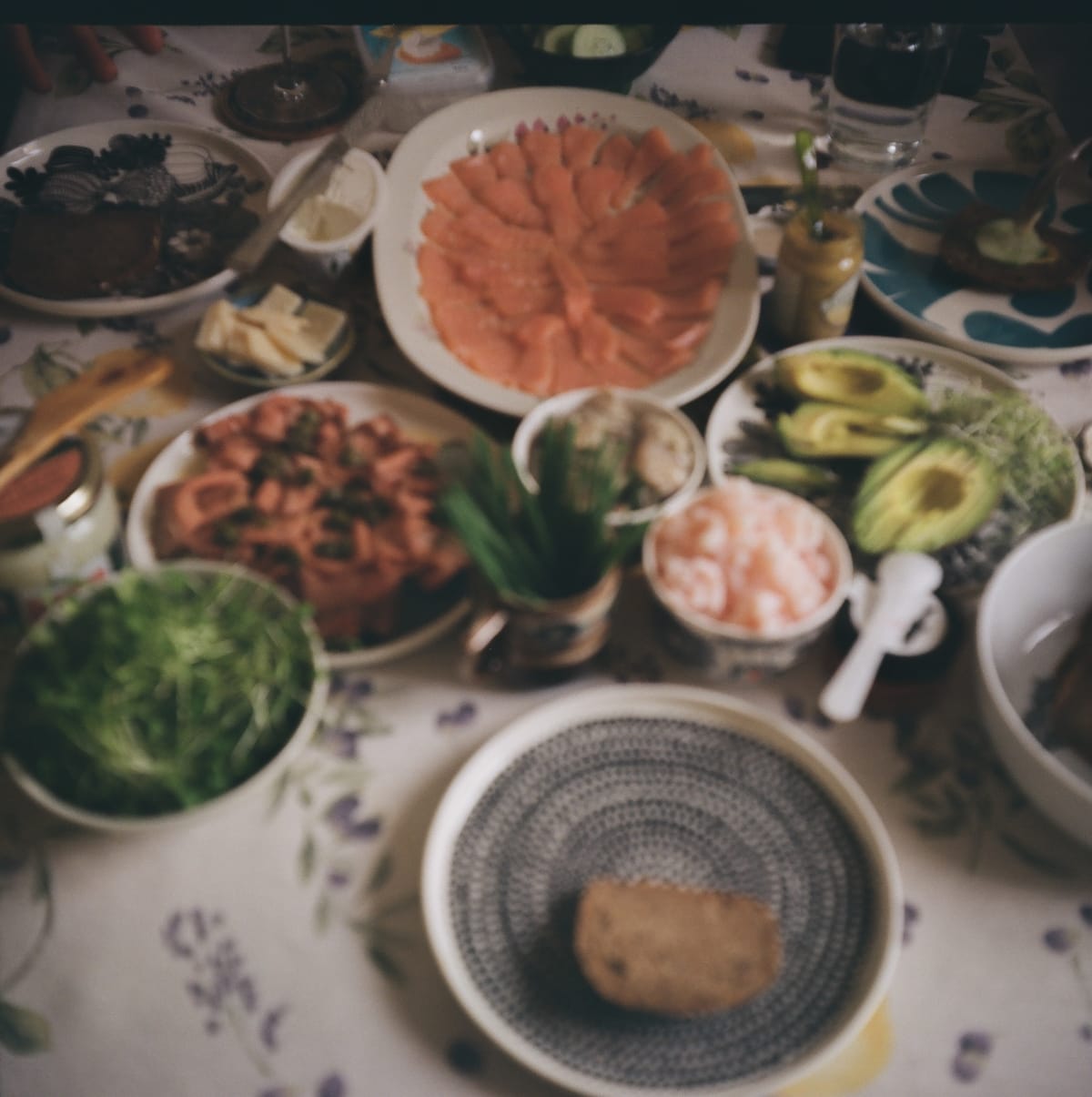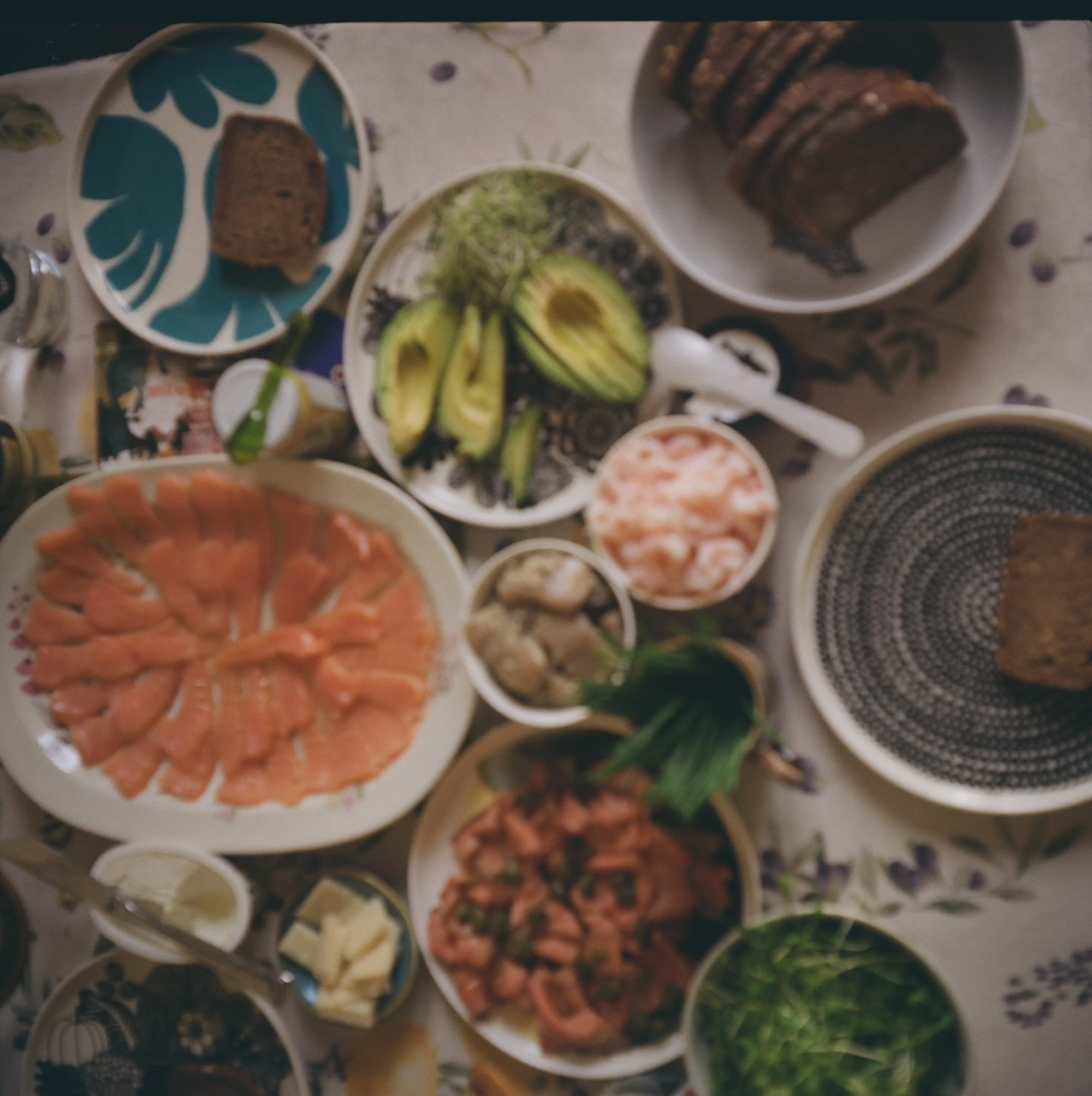What to eat DENMARK 🇩🇰 Smørrebrød
The seemingly vast if not infinite varieties of smørrebrød possibly means any recipes that do not give ample room for the creative tastes of the chef and smørrebrød consumer cannot be considered authentic. As far as national dishes go, it may be the most flexible and accommodating of them all.

Smørrebrød
Published June 21, 2024 · by Amanda Rivkin Häsler
Smørrebrød is in essence an open-faced sandwich that translated literally from Danish means “butter bread”. However, smørrebrød is anything but just these two ingredients. The seemingly vast if not infinite varieties of smørrebrød possibly means any recipes that do not give ample room for the creative tastes of the chef and smørrebrød consumer cannot be considered authentic. As far as national dishes go, it may be the most flexible and accommodating of them all.
The history of the smørrebrød in Scandinavia, not just Denmark, reflects this accommodating attitude or coziness of the Danish that has received a boost in international branding in recent years under the auspices of hygge. In Norwegian, it is smørbrød (also “butter bread”) and Swedish smörgås (“butter goose”) and even the Finns and Balts do their own variations of these open-faced sandwiches, often served on rye bread, a specialty of the Nordic Baltic region.
The dish itself dates back to the Middle Ages when sustenance was needed for long working days. The twelfth to fourteenth centuries in the Scandinavian waters of the Baltic Sea were characterized by an abundance of herring which led to the adoption of various methods of preserving it that we think of as distinctly Nordic to this day, from pickling and smoke curing the fish to salting, drying and even fermenting.
By the 1850s, a substantial migration from the countryside to the city was underway. With it, came a boom in urban smørrebrød snacks at bars served after-market hours. The industrial revolution also transformed how people ate and required on-the-job snacks, tipping the heavier meals of the day toward the latter half from the front half of the day preferred by hard-working farmers. The long lunch break slowly transformed into a to-go mid-day habit.
Women entering the workplace en masse by the latter half of the twentieth century also helped to redefine how (not just) Danes ate. Families pivoted from having a hot lunch and cold supper to a cold lunch and a hot supper. Leftovers from the night before can always be served over rye bread the next day at lunch, making for a nice smørrebrød and variety from day to day.

Akin to Danish tapas, they can be consumed on the go or as canapés in stylish settings. Their renaissance in the nineteenth century can be attributed to a few families who responded to their popularity as rural-to-urban migration transformed Copenhagen’s urban and culinary landscape.
No history of the smørrebrød seems complete without mentioning Oskar Davidsen whose now famous wine shop opened in 1888 and whose success gave life to a wine bar inside the shop. When customers became hungry and ached for vittles with their libations, his wife Petra would get to work slicing rye bread and piling on the fixings to make smørrebrød.
By 1901, they had created a list with more than 170 variations of smørrebrød on offer. It is a tradition they have passed on. Their great-granddaughter Ida Davidsen also serves the fancy Danish open-faced sandwiches in her Copenhagen haunt today. She is credited with making smørrebrød a Hollywood and household name.
Another marquee couple in the nineteenth-century renaissance of smørrebrød worthy of note is Louise and her husband William Nimb who popularized smørrebrød at their Divan 2 restaurant located on Lake Tivoli in Copenhagen’s pleasurable Tivoli Gardens, the second oldest amusement park in the world. Another restaurant, the Nimbs, which opened in 1909 had solely smørrebrød on the menu.
However, even before the rebirth of the classical Danish dish, the eighteenth-century poet Johan Herman Wesse penned a poem:
That smørrebrød is not food,
and love is not hate,
that is so far all I know
about smørrebrød and love.
While all might be fair when it comes to love and smørrebrød, in modern times, Juliette Gaarn Rasmussen of Restaurant Schønnemann told Whetstone Magazine, “The richer we became, the more we put on top.”
As far as arranging the smørrebrød and consuming them, there are but a few rules. Tradition would have fish, followed by meat with cheese as the closer. Smoked salmon is often served on white, not rye bread. Otherwise, whether you choose to make the smørrebrød and serve to your guests or offer the accoutrement to stack the smørrebrød for your guests to do it themselves buffet-style is a personal choice circumstances and events may dictate. But as a symbol of a democratic country with a monarchy still in place, it is hard to conceive of a national dish more regal yet liberal in terms of traditions.
Recipe
Ingredients:
These are essentially open-faced sandwiches, well dressed and nicely garnished, so please use your creativity and budget to do you.
However, for our at-home version we used:
250 grams smoked salmon
200 grams of cold-water baby shrimp
420 grams of pickled herring with onion and dill
50 grams of trout caviar
100 grams of roast beef
1 loaf of dark rye bread
One-quarter loaf of round light rye bread
1 cucumber
1 avocado
For the shmear:
Horseradish mousse
Herb & garlic soft cheese (like Boursin or cream cheese)
Mayonnaise with a hint of Dijon mustard
Mustard dill sauce
Duck fat
For garnish:
Chives
Garlic sprouts
Watercress
Capers
You can do this one-of-two ways:
Arrange all the ingredients on a table and let you and your guests make your own smørrebrød.
OR
Pre-make them as canapés, according to taste and desire and guest expectations and serve.
The most important ingredients of all are creativity and comfort, hygge in Danish.
Tips, tricks and notes:
Quality of your ingredients will dictate the quality of your smørrebrød. We splurged on smoked fish and pickled herring, which does not come cheap if of good quality in Switzerland, but well worth it.
For rye bread, we visited Bread-a-Porter at Münstergasse 74 in the old city of Bern.
Learn where to eat Danish food in Switzerland.
Follow our social media pages @swissglobaldining on Instagram, TikTok and YouTube